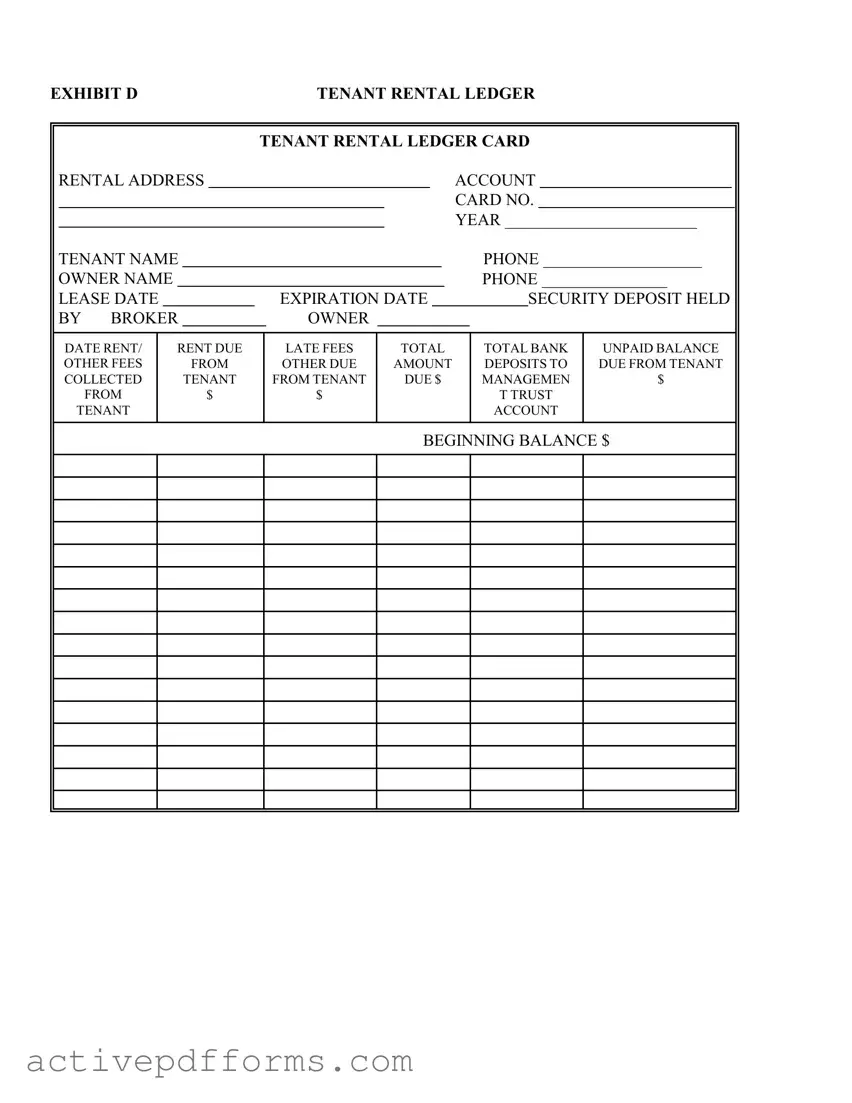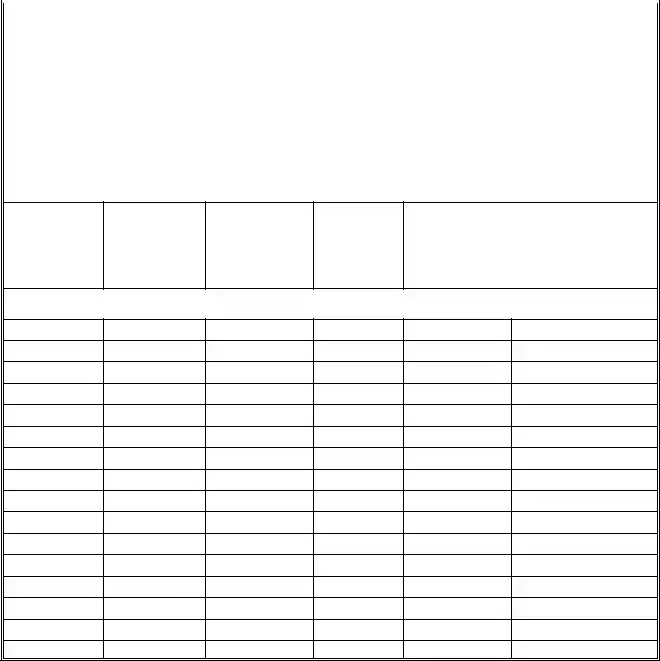In the landscape of property management, the efficient tracking of financial transactions between landlords and tenants is indispensable. At the heart of this financial ecosystem lies the Tenant Rental Ledger Card, a crucial document that meticulously records every financial interaction within the rental agreement. This form, labeled as Exhibit D for ease of reference, serves not just as a historical account but as a transparent communication tool between the two parties. It comprehensively lists the rental address, account card number, and the year to provide a clear context. Essential details such as tenant and owner names, along with their contact information, are prominently displayed. The lease agreement specifics, including the lease date and its expiration, along with the security deposit details, are crucial components that outline the financial obligations and protections for both parties. Furthermore, the ledger card breaks down the financial transactions, encompassing rent collected, rent due, late fees, and any other dues from the tenant, painting a clear picture of the tenant's financial responsibilities. Moreover, it records total amounts due, bank deposits, unpaid balances, and adjustments to the management trust account, ensuring a meticulous financial trail. The Tenant Rental Ledger Card thereby stands as an indispensable tool, ensuring clarity, transparency, and accountability in the landlord-tenant relationship.

